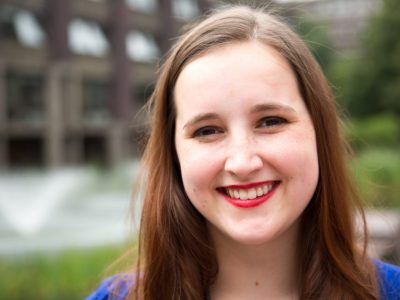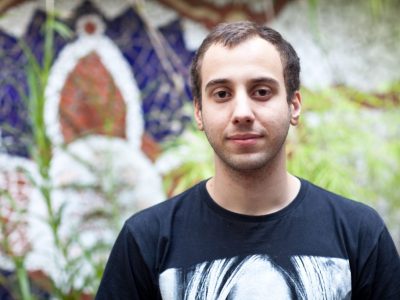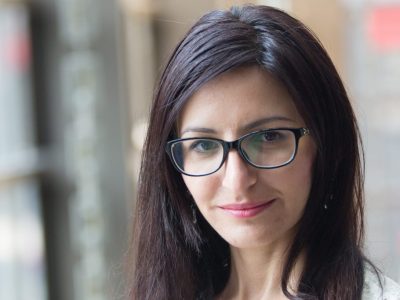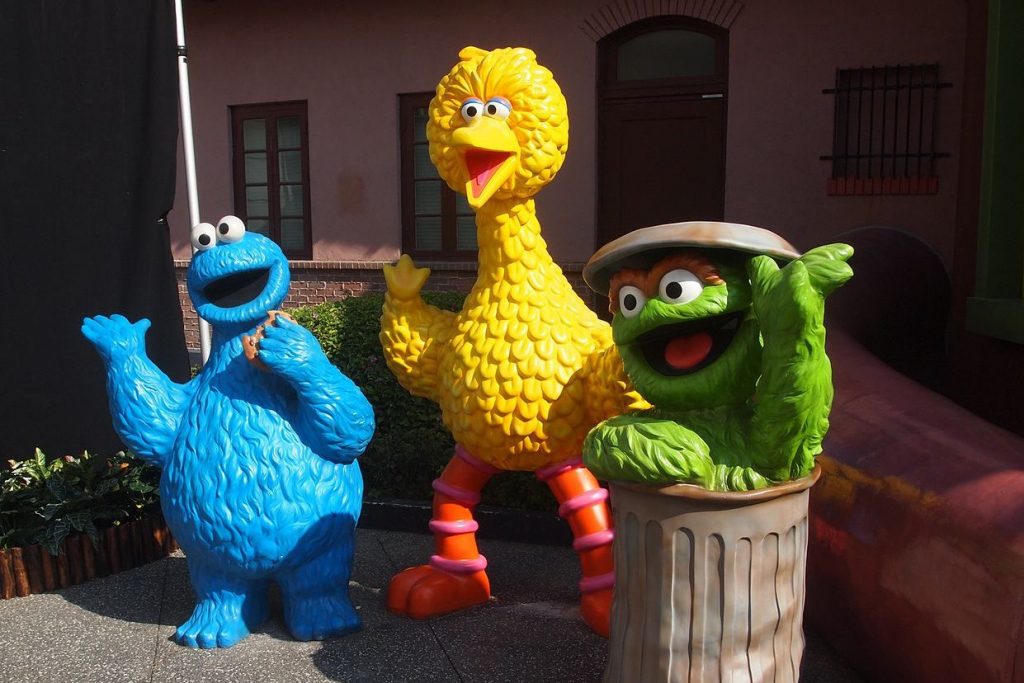Have you ever visited a Wikipedia page and found it so deeply engaging that you read through every word, then found yourself going deeper and deeper into the original source material? Take the history of Sesame Street, for example. The article describes how the early children’s program has changed and adapted over the past five decades, and contains wonderfully vivid details about the show’s earliest days.
Much of this is thanks to Christine Meyer, better known on Wikipedia as FigureSkatingFan. Meyer has worked on many of the articles related to Sesame Street, including the flagship article as well as pieces related to international co-productions and how Sesame Street conducts research.
Meyer has been editing Wikipedia for a decade. In that time, she’s made over 27,000 edits on the site and contributed to 23 featured articles and lists, as well as two featured topics—where “featured” is an indicator of high quality. Her interests span from children’s programming to American poet, memoirist, and civil rights activist Maya Angelou to the GA Cup, an annual contest focusing solely on good articles (another quality ranking).
From proofreader to editor
Meyer’s first edit on Wikipedia was made on 3 February 2007. “I saw the tagline on the main page—the free encyclopedia that anyone can edit—and actually believed it,” she says. “So I clicked on the link and set up an account, because I usually do what I’m told.”
At the start, Meyer focused on her attention on correcting typos. She graduated to checking sources, then moved into the trenches of editing–research, writing, and collaborating with others. “I found that I really enjoyed the collaborative nature of Wikipedia, most of the time, when it wasn’t contentious,” Meyer says.
All roads lead to Sesame Street
Like many Wikipedia editors, Meyer started with what she knew. She’s a long-time fan of The Muppets, and first began watching the show since it premiered in 1969. “Plus, my kids are severely developmentally disabled, so we watched it daily,” Meyer says. “That makes me a natural expert on children’s television, so that became a niche for me on Wikipedia.”
My other articles are about The Wiggles, which I know everything about, Blue’s Clues (another featured article), and Sesame Street. Sesame Street has the most written about it, so it was easy to research. As I worked on the Sesame Street article, I found that I had enough content for the History of Sesame Street article, so I created and developed it. I’ve developed a good-sized library about children’s TV. It was fun and inspirational learning about Sesame Street! One of my favorite SS articles is Sesame Street international co-productions because it describes some of the great outreach Sesame Workshop does.
The Wiggles was her first featured article, which she took on because the show had made a big impact on her kids’ life. Then she moved onto Blue’s Clues — “which is still my son’s favorite thing in the universe” — and found a lot of research about it. One of her sources was Malcolm Gladwell’s book The Tipping Point, which has a couple of chapters about Blue’s Clues and Sesame Street. That brought her to Sesame Street. “I always say, ‘All roads lead to Sesame Street.‘ That’s kind of how articles happen for me: I follow a bunny trail, and if something interests me, I stop.”
Documenting a prolific writer and remarkable figure
Meyer had always admired Maya Angelou, especially after reading her first autobiography I Know Why the Caged Bird Sings in high school. ” I stumbled upon the Caged Bird article, and was shocked at its low quality,” Meyer says. “Then I visited her biography article and became appalled that such an important writer and figure would have articles about her in such poor shape.” This was also around the time Meyer learned about Wikipedia’s gender gap. “Like other women editors have done, I decided to help change it, and that’s when I became a committed editor.”
Meyers wrote the Caged Bird article with research and writing help from Moni3, Scartol (an English high school teacher), and the late Adrianne Wadewitz. She read everything she could about Angelou’s writing. She read all six of Angelou’s autobiographies, then wrote articles about each of them and brought them all to featured article status.
“It became a personal goal to create a featured topic about her, which I’m very proud of accomplishing in mid-May 2014,” Meyer says. Less than two weeks later, Angelou died at the age of 86. Her bio and Caged Bird articles were read by about 1 million people the week she passed.
“The world turns to Wikipedia when people die, and I’m proud that I was partly responsible for ensuring that people have high-quality, well-written, well-researched information about her,” says Meyer. “My only regret is that I never got to meet her.”
Advice for new editors
“Committed editors need to learn Wiki-markup; there’s no way to avoid it,” Meyer says. She admits she’s not the most technical person in the world, but stuck with it until she figured it out.
“I use VisualEditor, which is a good tool, but it has limitations. I like the citing templates, since creating citations by hand can be cumbersome.”
Above all, she says the best tool in Wikipedia is other editors. Meyer says most are enthusiastically willing to help if you ask. “Collaboration is often the best part about Wikipedia, as I said above, so you can always find folks to help you,” she says.
Learning through research, writing, and collaboration
Her favorite part about contributing to Wikipedia is that she gets to learn something new by researching articles and writing them.
One of the most fun things is to find an article you think would never have the potential to be a featured article, and then after researching it, you discover that they do. One of those articles for me was Stanford Memorial Church. Now, I didn’t attend Stanford (although my sister-in-law did as an undergraduate), but it just drew me in. Its development is another wonderful example of collaboration. Plus, I got to learn about art, architecture, and organs. One of the highlights of my recent life is visiting the church in the summer of 2014, which was a spiritual experience.
Meyer says one of her favorite aspects of editing can also be contentious for some contributors: the collaborative nature of editing. “When it works, it’s great, but when it’s contentious or controversial, it can be painful. I’ve been lucky; despite always being out as a woman, I’ve had very few experiences with overt sexism. I’ve seen others experience it, though, so I know it happens. I tend to be drawn towards non-controversial topics, so I haven’t attracted much attention from the trolls.”
Meyer is particularly proud of her contributions to the Wikipedia GA Cup: a championship-style editing challenge focusing solely on Good Articles. The purpose of this competition is to encourage high-quality reviews and promotions of Good Articles, and to help decrease the traditionally long queue of good article nominations. “I estimate that because of the GA Cup, I’ve helped improve hundreds of articles, which is more effective than the few articles I’ve contributed to,” she says. “Both [are] important, but I’m proud of the difference we’ve made.”
Profiles — Profile
Other members of Wikimedia community

Emily Temple-Wood
Editor since 2007, Wikimedia community
Vitor Mazuco
Editor since 2009, Wikimedia community
